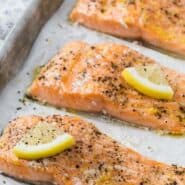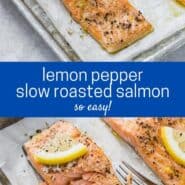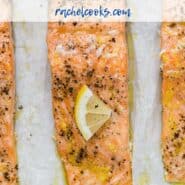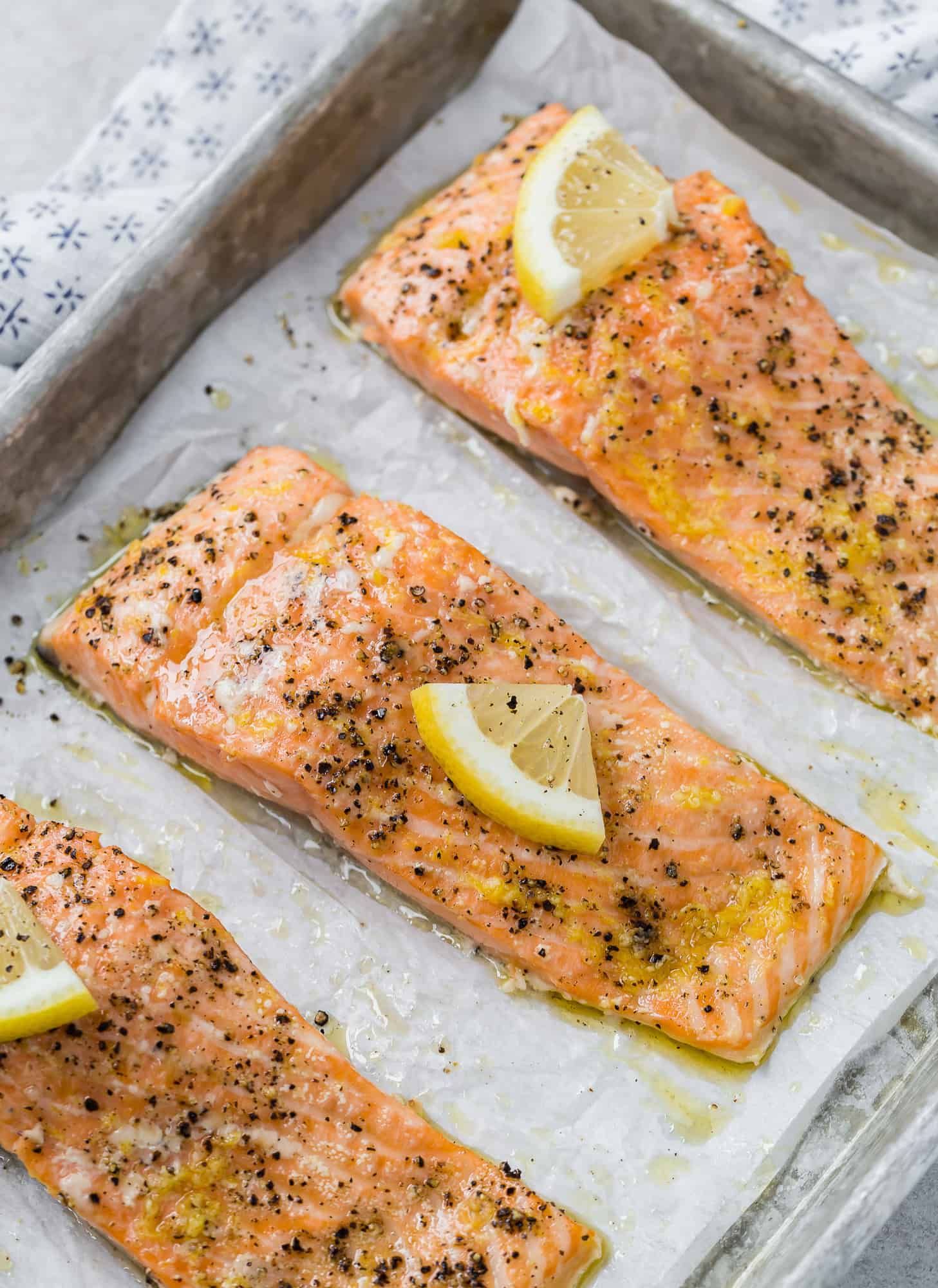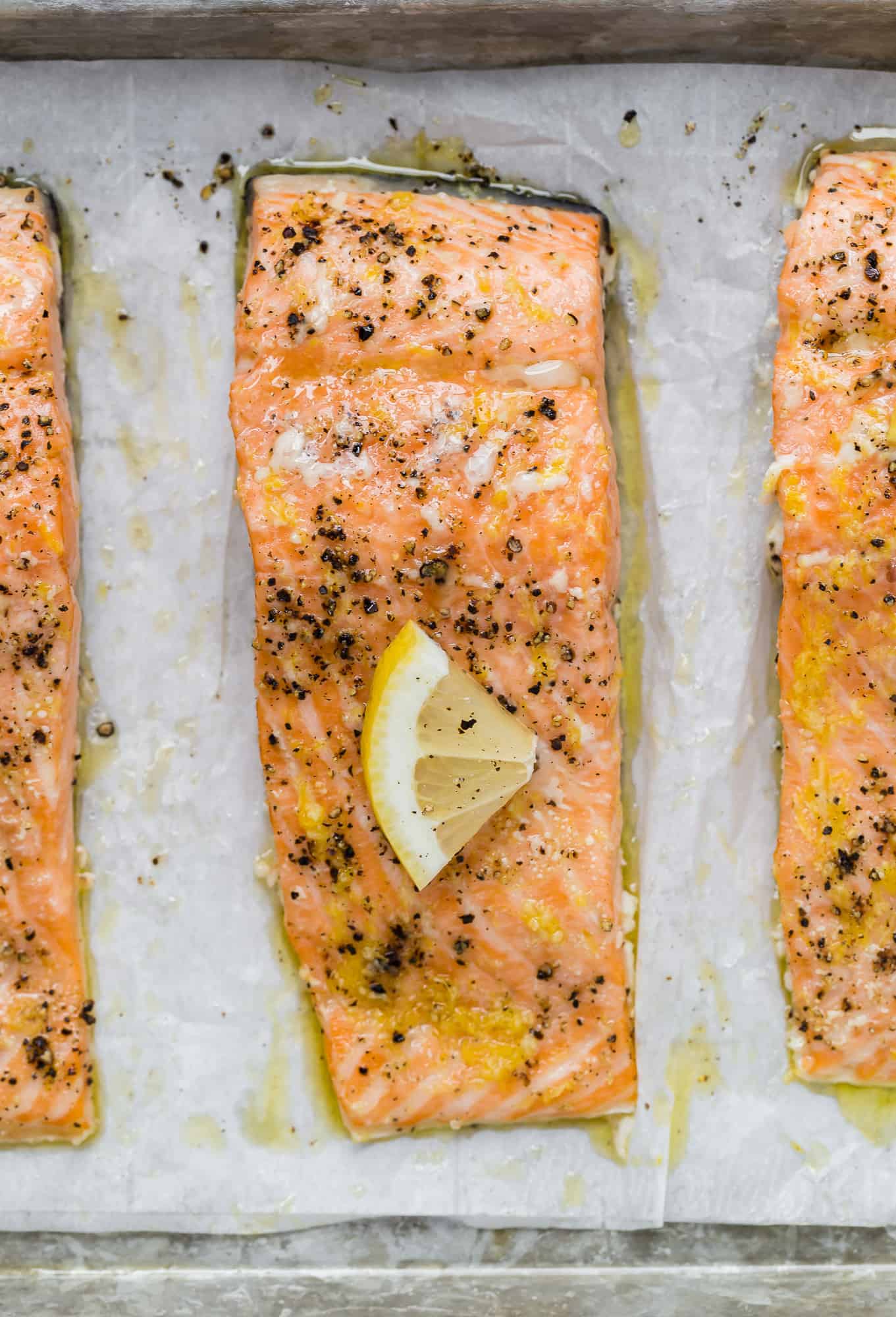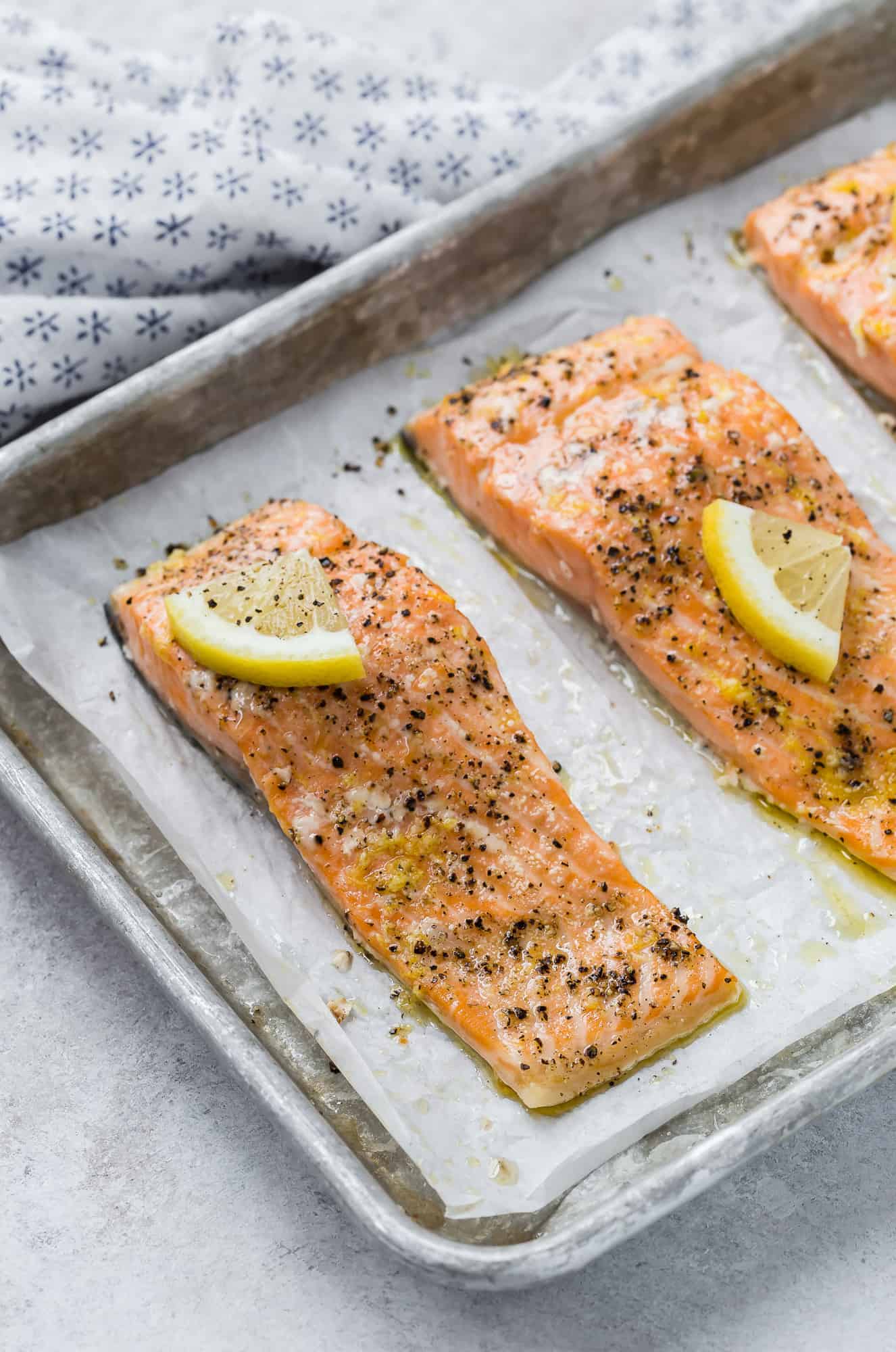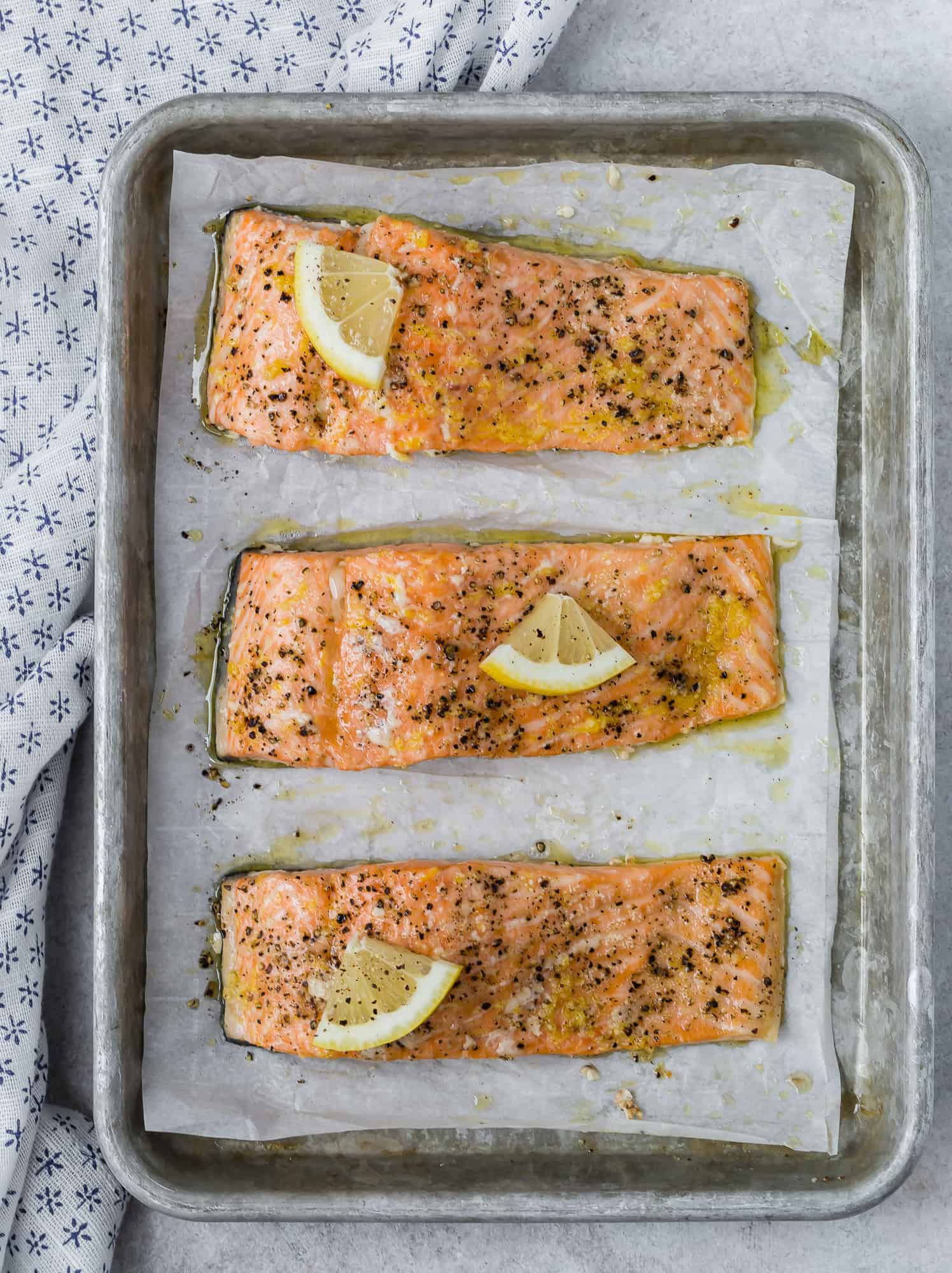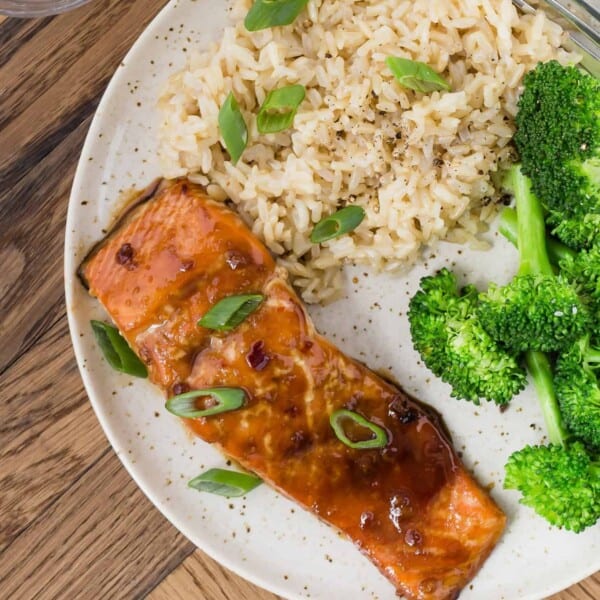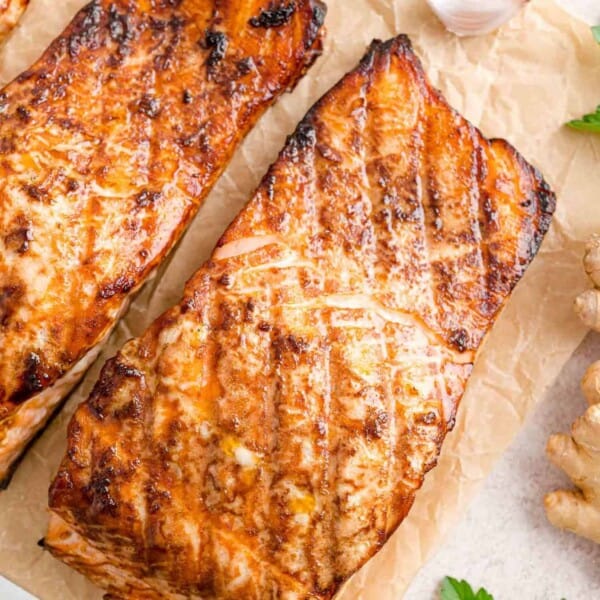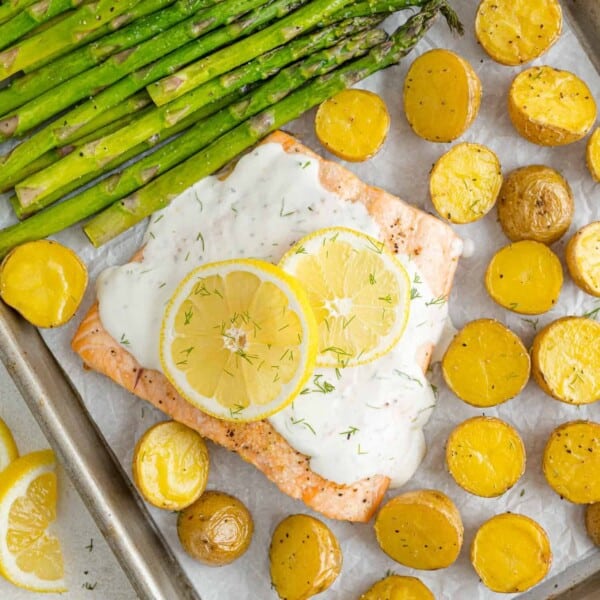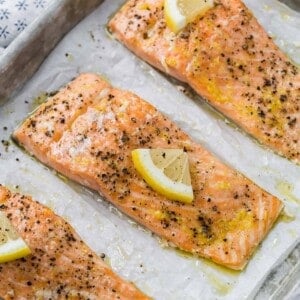How long it takes: 45 minutes Equipment you’ll need: rimmed baking sheet, parchment paper (optional) Servings: depends on how much salmon you have; it’s very easy to adjust the recipe But I’ll try anything at least once, and boy, am I glad I gave slow roasted salmon a try! Quite honestly, it’s the best way to make salmon (although air fryer salmon also has a place in my heart, and in my stomach, always). Suffice it to say, slow roasted salmon is juicy and melt-in-your-mouth tender every time. And there’s nothing tricky about it.
Fail-Proof Roasted Salmon
I really think you’re going to love slow roasted salmon. If my husband is any indicator, it’s the only way you’ll be making salmon from now on! Here’s why: It’s actually quick. Don’t be discouraged by the word “slow.” We’re not talking eight-hour-slow. Not at all! Your salmon will be ready to eat in forty minutes or so. You can wait that long, right? Delicious texture and flavor. Slow roasting imparts a wonderfully tender texture to the fish, while a zesty smothering of fresh lemon zest and cracked black pepper ties all the flavors together. Perfect every time. One of the advantages of slow roasted salmon is that it’s pretty forgiving. If you leave it in the oven an extra five minutes, no problem! Isn’t that a relief? You don’t have to be a kitchen magician, timing everything to the minute.
Should salmon be cooked fast or slow?
The beauty of salmon is that it can be cooked hot and fast, or low and slow. You’ll find quick recipes on my site like thirty minute baked salmon with maple mustard sauce, and others like this luscious slow roasted salmon. Slow roasting salmon at lower temperatures takes the pressure off a little, as it’s less likely to dry out the fish. It’s great for beginners because it’s almost impossible to overcook the salmon. Oven-roasting salmon slowly at lower temperatures allows the fat to render gradually. The result? You’re basically guaranteed to end up with an evenly-cooked, perfectly-cooked, melt-in-your-mouth salmon fillet with the silkiest texture.
Ingredient Notes
I’ll get you started on this recipe and give you lots of helpful tips. Scroll down to the printable recipe card for complete instructions, measurements, and nutrition information.
Salmon: A serving of salmon is typically four to six ounces. Buy as much salmon as you need. The recipe can easily be adapted. If the salmon is frozen, thaw according to package directions. Lemon Zest: For lots of lemony flavor, without all the juice. Olive Oil: This heart-healthy oil adds flavor and locks in moisture as the salmon roasts. Salt & Pepper: Just simple seasonings that let the flavor of the salmon really shine through.
How To Make Slow Roasted Salmon
Preheat the oven. Turn your oven on and preheat it to 275°F. It’s what you call a “slow oven.” Seriously. Slow oven = slow roasted salmon. Prepare a baking sheet. Line a rimmed baking sheet with parchment paper (no pans to wash either!). Aren’t you loving it already? The parchment paper is optional but who doesn’t like easy clean-ups? Arrange the salmon on the pan. Place your salmon fillet skin side down on the parchment paper. You can cut it into serving-size fillets, or keep it whole. Keep in mind, if you keep it whole, it will take slightly longer to cook and it can be a little difficult to cut into attractive serving-size fillets after it’s cooked. Make the lemon pepper dressing. In a small bowl, mix together olive oil, lemon zest, and salt. Spread it over the salmon, and then grind a bunch of black pepper over that. Bake. Put the salmon into the oven, and bake it at 275ºF. Depending on the thickness of your fillet and how accurate your oven temp is, the salmon will take about 30 to 40 minutes to reach the correct internal temperature. Serve. Remove the salmon from the oven and let it rest for five minutes, then serve it right away with your favorite sides! Keep reading for ideas.
helpful Tips
Here are some final tips and notes for slow roasting salmon with lemon pepper: According to the USFDA, salmon is fully cooked when the internal temperature reaches 145ºF. If you don’t have an instant read thermometer, how can you tell if the salmon is done? Try poking it with a skewer or a fork. It should slide in pretty easily, the salmon should flake easily, and be easy to separate from the skin.
If you’re worried about overcooking your salmon, take the salmon out of the oven when the internal temperature reaches 130-140°F and let it rest for five minutes or so. The temperature will continue to rise a bit. The white stuff is normal. Don’t worry if you notice gooey white stuff on top of the salmon when you roast it. That’s albumin, a type of protein that coagulates and rises to the surface of the salmon when you cook it. It’s perfectly safe to eat, but scrape it off if it bothers you.
Recipe Variations
This recipe is basic on purpose. Once you learn the slow roasting method, you can dress up your salmon however you like best. I do want to say that this salmon doesn’t need sauce or extra flavors which are often used to mask poorly cooked salmon. It’s perfect just the way it is! However, here are a few suggestions that you may want to try:
Try adding chopped herbs. Chopped fresh dill (or dried dill), parsley, chives, lemon balm, and basil are good choices. Love garlic? Sprinkle the fillet with minced garlic. Add a sauce after baking or serve it on the side. I love tzatziki cucumber yogurt sauce with this salmon recipe. Try salsa verde or pesto. Homemade ranch dressing is good, too (it’s good on everything!). Garlicky chimichurri sauce or this roasted red pepper sauce by Pinch of Yum really add amazing flavor. If you’re looking for salmon that’s golden and crisp outside, this maybe isn’t the recipe for you. However, this baked almond crusted salmon likely is!
Serving Ideas
The extra time this salmon takes in the oven gives you plenty of space to come up with delicious side dishes! We love serving salmon with these air fryer Brussels sprouts or this Mediterranean-style green bean salad with sun-dried tomatoes, walnuts, and olives. Salmon also pairs nicely with grains like brown rice and fluffy, nutrient-dense quinoa.
Storage & Reheating Tips
Leftover salmon? I envy you! You’ll find that this salmon is perfect for salads, pasta dishes, or sandwiches. Fridge: Refrigerate leftovers, tightly wrapped, for up to 3 days. Reheat leftover salmon in a pan on the stovetop, or in the oven until warmed through. You can also reheat it in the microwave at 50% power, just be mindful that you don’t overcook it. Freezer: I wouldn’t recommend freezing cooked salmon, as it will likely lose its excellent texture. However, if you must freeze it in a pinch, be sure to seal it tightly in a freezer bag or airtight container, and defrost it within 4 months.
